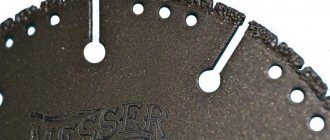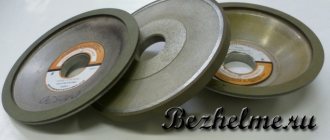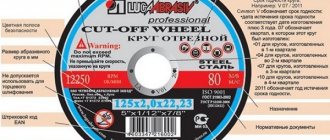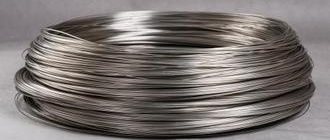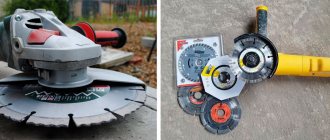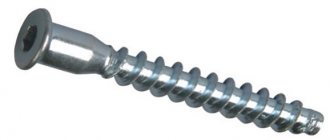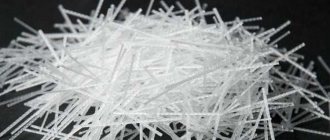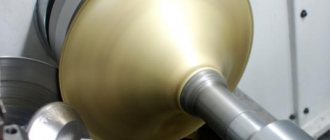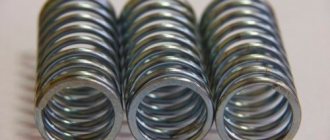Types of diamond blades for metal
Diamond blades vary in purpose, design, and manufacturing technology.
- If they are a round steel plate with a strip of diamond grains applied to its outer edge, they are called solid.
- If they have slots from the edge to the center for approximately 10–15% of the diameter, necessary for heat dissipation, they are called segmented. They can operate at high speeds.
- If an oblique notch is applied to the surface, then this is a turbo. They are more durable.
- A diamond cutting disc with slots and serrations is the most productive and is called turbo-segmented.
The marginal strip of grains is called the cutting edge. Diamond grains come in different sizes and are attached to metal in different ways. The size of diamonds determines work efficiency and working life. Large grains wash the metal being processed better, but wear out more quickly. Small ones work more accurately on metal, but their productivity is lower. But they have a higher working resource.
Diamond grains are attached to a steel plate in various ways: soldering, laser welding, and electroplating. The purpose of the tool also depends on the method of fastening. Discs with soldered grains are used in conjunction with water cooling. Galvanically bonded grains work well with soft materials. Diamond blades with welded grains are good for cutting hard metal alloys.
Diamonds are fixed in the working rim in a certain order. There are disks with a uniform distribution, when segments of the same length contain the same number of crystals.
But there are products in which diamonds are placed at a certain frequency (sandwich). They have greater productivity, exert less pressure on the tool, are better cooled and distribute forces more evenly.
Scope of application
Disks can do the following:
- cutting reinforced concrete
; - do gating for communications;
- grind the concrete floor.
In order for the surface to be completely even, the disc must be chosen correctly; this will save your money and reduce labor costs.
The disk is a circle of metal with a small width; cutting diamond plates are placed on its edges. They are made from industrial ground diamonds pressed into a binder:
The plates are attached to the disk using laser welding or soldered with silver. To make the cutting tool last longer, it is connected to the iron base using powder soldering. When the cutting part of the disk is sharpened, it can be used for its intended purpose.
Diamond grinding wheels
Using grinding wheels, the concrete is processed to level the floor before the decorative coating is applied. The working equipment is a grinder or a grinding machine. A special feature of such tools is that the diamond cutting layer is located on a conical annular surface protruding along the edge (cup).
The wheel for mechanical processing of floors is equipped with several sanding cups, and between them there are grooves for removing dust.
The second type of tool for concrete structures is diamond grinding discs. With their help, concrete is polished as needed to level the floor.
Cutting discs
This category of diamond wheels is divided into a number of types.
Segment disks for dry cutting are used in conjunction with hand tools:
The contour on the base of the segment circle is located in the form of several sectors, between them there are circular through grooves. The discs heat up when cutting, while the plates experience enormous stress. The slots are necessary to relieve stress in the cutters, remove waste, compensate for linear expansion and dissipate heat. To better distribute shock loads, use a radius boring at the end of the technological slot.
A separate type of segment wheels are diamond tools for fresh concrete. The sector has a special composition with which concrete can be cut within 2 days after hardening. The diamond layer is usually sprayed directly onto the body without a bonding alloy.
READ How to Sharpen a Trimmer Disc
The second type of cutting discs is solid. There are no parts on them, the stress is distributed using circular holes. They are necessary if concrete is cut with water cooling. Wet processing is carried out on stationary equipment that can supply coolant.
The next type of cutting wheels is specifically for reinforced concrete. Their design is segmental, but at the same time there are more diamonds in the teeth. Remember that it is difficult to cut reinforced concrete without the help of others, since the grinder heats up quickly and dust gets inside the machine, accordingly, a special protective engine is needed. With manual tools, reinforced concrete can be cut in one pass to a maximum depth of 10 cm, then the grinder will turn off.
Turbo segment cutting wheels are solid and are cooled by their own wavy surface. They are expensive, but have advanced functionality and a long service life. With their help you can cut not only concrete, but also reinforced concrete, but only if the diameter of the reinforcement does not exceed 10 mm.
Main advantages and disadvantages
Diamond cutting discs are a universal tool. They are suitable for cutting not only metal, but also other materials of increased hardness: brick, reinforced concrete, foam concrete and others. The advantages of this tool include:
- increased geometric cutting accuracy;
- flat surface;
- almost silent operation.
The diamond blade does not exert pressure on structures adjacent to the cutting surface and does not change the structure of the material during operation. At the same time, significantly less time is spent on completing the work than when using other tools. The diamond wheel operates in the absence of a flow of sparks, and, as a result, there is no burning smell.
The cost of work using diamond blades should be calculated for each specific job.
The disadvantages of such a device include its high cost, but the working life of a diamond cutting tool significantly exceeds (almost 70 times) the working life of abrasive discs performing the same work. Equipment downtime is reduced by reducing the frequency of tool replacement. When using active cooling, it is possible to increase rotation speed and productivity. Throughout its service life, the tool retains its geometric characteristics.
Professional circles
For production purposes, professional diamond wheels with diameters from 125 to 350 millimeters are used. Their cost is significantly higher than the price of similar household cutting tools, but their very high wear resistance and excellent quality of abrasive coating ultimately make them more profitable for regular use.
The high price of professional discs is justified due to their high durability. Products from Distar and Bosch have excellent performance, but the price for one such circle with a transverse size of 230 mm is more than 2,600 rubles.
Classification of professional diamond blades by purpose:
- cutting reinforced concrete;
- making carvings on a concrete base;
- cutting marble, ceramics, granite massifs.
It is very important to understand that if the purpose of professional tools does not correspond to the purposes of use, they will wear out very quickly, and ultimately the costs of performing the work will increase.
Main characteristics and markings
One of the main characteristics of a diamond blade is its size - the outer diameter, on which the maximum cutting depth depends. For a universal grinder (angle grinder, grinder) there is a size range: 115, 125, 180 and 230 mm. Powerful metal cutting machines are equipped with devices with a diameter of 150, 300 or more millimeters. The mounting holes located in the center are used for installation on the mechanism shaft and have diameters of 22.2 or 25.4 mm. Like any product, a diamond cutting disc has a set of basic characteristics:
- type;
- size;
- the abrasive material from which it is made;
- the material for which it is intended for processing;
- grain;
- hardness;
- type of ligament;
- maximum speed;
- accuracy class;
- manufacturer.
These characteristics are encrypted in the form of alphanumeric markings, which are present on each diamond blade. The rules for labeling do not have strict regulations. Each manufacturer designs it differently, but the main characteristics are always present.
- Disk type. In theory, there should be a digital designation: straight profile;
- cutting;
- with recessed center.
- D – outer diameter;
- ceramic bond – V (K – old designation);
What does the marking on a diamond cutting blade mean? As an example, we consider the symbols printed on the tool of the Russian manufacturer ISMA flex (see figure).
General information
Please note that at the moment it is even impossible to imagine the work of repairmen, builders, mechanics and mechanics without an angle grinder. With its help you can cut various materials, including metal - rods, fittings, water pipes, profiles and corners
The cut obtained from an angle grinder can be ground, sharpened or polished. An incredibly large selection of interchangeable attachments helped make this tool universal and indispensable. At the same time, it would be dishonest to mention that this is the most dangerous electric tool. To cut metal, you will definitely need the material itself, a face mask, an angle grinder, glasses and replacement discs.
How to choose the right angle grinder
The correct choice of an angle grinder, as well as the quality of its assembly, will determine the quality of work and the safety of the operator. When choosing a machine, you should focus on the main parameters - the diameter and power of the cutting abrasive wheel
No less important will be how much the tool weighs, because you often have to do work “by weight”, and the size of the tool will influence whether you can do the work even in hard-to-reach and inconvenient places or not
Many buyers, when they see a very powerful tool, begin to get a little scared that it will be much more difficult to cope with it than with a tool that has low power. In fact, this opinion is wrong. Grinders with low power most often cause the disc to jam, because they are not physically able to “pull out” the disc under heavy load.
The situation of how the disk and machine will behave after the load is reduced is completely unpredictable. Most likely, the grinder will begin to break out of your hands. The consequence of this will be a fracture of the disk, damage to the tool and even injury to the carver. For this reason, beginning craftsmen should choose a grinder for a disc with a diameter of 12.5 cm and a power of at least 0.8-1 kW, and the spindle speed should be at least 10,000 revolutions per minute. Such power will be enough to saw iron.
By the way, there are machines specifically for cutting metal with a disc with a diameter of 11.5 cm and powered by a battery, but as practice has shown, given their incredibly high cost, the devices are almost not worth their while in solving everyday problems.
The handles of the grinder must be rubberized or at least made of a material that will dampen vibration from the machine. But keep in mind that no technical data can reflect the convenience and safety of operation
The grinder should lie securely and comfortably in your hand, so that when working with metal you can focus all your attention on it, and not on how to hold the tool in your hands. It will be optimal if the handles are rubber or made of a material that can dampen vibrations and has indentations for fingers
Angle grinders usually do not have an additional handle. If you find inconvenience when choosing a tool, then you should choose another model.
How to choose the right cutting discs
Is it possible to cut wood with a grinder? Yes, of course, but in special circles. They have markings that help you choose the right circles
When choosing a disc, you should know what you will use them for, so pay attention to the thickness and diameter, as these are the main parameters
The smallest diameter can be 12.5 cm, and the largest publicly available 25 cm. For professional angle grinders, the discs can be even larger. The thickness of the part being cut and the maximum depth of cut may depend on the diameter of the disk. If you plan to cut only metal, then it is worth investing in a special cutting disc. Its small thickness ranges from 0.1 to 0.12 cm, and for industrial angle grinders the value is 0.25 cm. This helps ease the physical load on the device, as well as for the operator. The cut is beautiful and neat.
If you want to do figured carving on thin metal, then it should be done using a disk of the smallest diameter, or an old, almost worn-out disk. Most people believe that a diamond blade should be used to cut metal, but in fact, this opinion is completely wrong. The diamond blade for metal will get stuck and become unsuitable for further work. Experts say that even beginners in this business do not have great difficulties when cutting metal with a grinder.
Diamond blade manufacturers
The following companies are deservedly popular among manufacturers:
- Bosch. German leader in the production of power tools and related materials.
- FIT. The Canadian company produces tools for professional and household use.
- Dremel American company producing high quality power tools.
- Husqvarna. A Swiss company that is known for its high performance and level of durability.
- MESSER. A Korean manufacturer that produces a wide range of attachments for grinders.
- Zubr. Russian company producing power tools and cutting equipment.
- Hitachi Power Tools, Luga Abrasiv Extra. Has excellent value for money.
Diamond cutting discs are an effective tool with high productivity and provide comfortable conditions when performing work. Do you have experience working with them? Be sure to share it in the comments to this article.
Will a diamond wheel for concrete for an angle grinder get stuck if it gets on the reinforcement?
Or is it designed for the fact that there is reinforcement in concrete
It all depends on the time and effort of contact, if you are persistent in sawing, screwing up,
I have a lot of 4's in my walls. It sparks, but goes away.
I sawed through thin (5-6 mm) reinforcement several times. You can feel it by a drop in speed and the appearance of sparks. Due to the small number of hits, I did not notice any changes in the disk.
I cut the welded mesh a little and I didn’t notice any accelerated wear in concrete
ilart wrote: Or is it designed for the fact that there is reinforcement in concrete
Depends on the type of circle.
Alex___dr wrote: Depends on the type of circle.
I often passed through reinforcement, even 10-point, with a diamond segment wheel. Without consequences.
DOKA wrote: I often passed through reinforcement, even 10-point, with a diamond segment wheel. Without consequences.
Who would object! Diamond wheels for reinforced concrete – segmented.
Thank you all for the comprehensive information. I won’t be particularly afraid of reinforcement bars now.
ilart wrote: Or is it designed for the fact that there is reinforcement in concrete
There are special wheels for concrete and cutting reinforcement at the same time. They really cost more. Before the New Year, I bought myself a Bosch grinder - they offered me one. Like a new model and all that. It really looks more solid than a simple concrete disc.
" > . Diamond blades are not suitable for cutting metal structures or steel and aluminum sheets. Nothing has been written about reinforcement in concrete.
